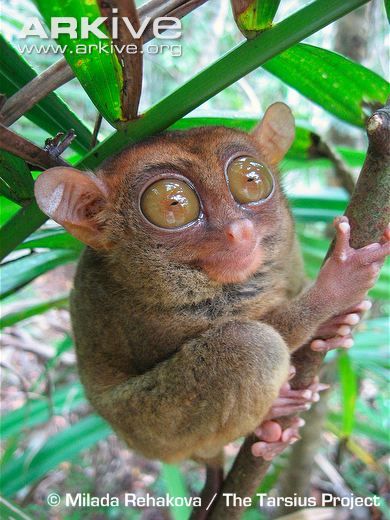NEXT UP: #1 seed Emperor Penguin (Aptenodytes forsteri) vs. #3 seed Wolverine (Gulo gulo) #2023MMM
These contenders may be in the #DadBods division, but don't forget it takes 2 to tango! Though male emperor penguins shoulder all egg incubation duties, females return around hatching time to relieve the fasting male & care for the newborn chick. #teamwork #2023MMM 

Faced with a large group of similarly tuxedoed males, female penguins rely on vocalizations to find their mate & chick. Emperor penguins' "two voice" system increases call complexity & allows individuals to recognize each other. #2023MMM
ncbi.nlm.nih.gov/pmc/articles/P…
ncbi.nlm.nih.gov/pmc/articles/P…
In female wolverines, reproductive success in a given year is shaped by a combination of winter food availability & the energetic cost of reproductive effort during the previous year. #2023MMM cdnsciencepub.com/doi/abs/10.113…
The average wolverine litter has 3 kits, which are born in a snow den. Kits are weaned around 3 months of age & become independent around 6 months. [photos via @GuloFoundation] #2023MMM 

Wolverine have longer fur in winter. Longer hair insulates better against colder temperatures, but insulates a bit too well in warmer climates. This is one reason why many mammals molt their fur seasonally. #2023MMM 

Tonight the random battle location is... GHOST FOREST!!!! #2023MMM
Specifically, the Neskowin Ghost Forest on the Oregon Coast that is best viewed in January, February, and March at low tide... <checks notes> BOO YA! #2023MMM 

A recent visitor to Western Oregon, Wolverine pads along the beach amongst all that remains of a Sitka Spruce temperate rainforest inundated by saltwater 1300 years ago. #2023MMM npr.org/2023/03/24/116… 

A "megathrust earthquake" in the "Cascadia Subduction Zone" caused a "Holocene Paleotsumani" that sent "catastrophic marine inundations" 1km inland & 27 feet above sea level, leaving behind salt & sand that killed the forest. (Peterson et al. 2010; Nelson et al. 2020) #2023MMM 

Wolverine is very comfortable in tonight's mid-40s misty weather... #2023MMM
Especially as Wolverine's body temperature is a bit higher than usual from the extra energy he's burning to digest a full belly from gorge-feeding on Greater Rhea only last night #MeatSweats aka Diet-Induced Thermogenesis (Tumble et al. 2003) #SNIKT #2023MMM
Emperor Penguin is also thermally comfortable in this haunting remnant forest. Standing still, beak turned upward in the late afternoon mist, the Emperor Penguin is barely distinguishable among the ancient spruce stumps. #2023MMM 

Until his waddling Emperor Penguin walk gives his location away to the Wolverine, 100m away. #2023MMM
Due to Wolverine's circumpolar distribution in the Northern Hemisphere and Emperor Penguin's circumpolar distribution in the Southern Hemisphere, each has pretty much no frame of reference for the other. #2023MMM
But Wolverine is no stranger to shorebirds & their eggs, and with the great curiosity of his mustelid kind, Wolverine ambles toward the Emperor Penguin to see what it's all about... #2023MMM
closer... closer... closer... #2023MMM
CLOSER! WOLVERINE IS 30m AWAY! #2023MMM
Emperor Penguin just stands there watching the Wolverine approach. #2023MMM 

"Because emperor penguins are not threatened by any predators on land and do also not compete against each other for territories, evolutionary development of energy-consuming threatening behaviours would be of no use for the species." (Rümmler et al. 2021). #2023MMM
But now that Wolverine is now 20m away, Emperor Penguin is getting a bit concerned & he starts agitatedly flipper-flapping!!!! (Rümmler et al. 2021). #2023MMM
The flipper-flapping causes Wolverine to slow his roll, but stays on curious target... #2023MMM
Wolverine is now 10m away. TOO CLOSE! Emperor Penguin waddle walks away from the intruder, flipper-flapping as he heads for the breaking waves of the Pacific Ocean! (Rümmler et al. 2021) #2023MMM
Wolverine watches with bemusement at the ocean-bound waddling & flipper-flapping Emperor Penguin, but is little inclined to give chase. #2023MMM 

Kill frequency in predators is determined by the size of a recent meal & the "gastric capacity" of the predator. Wolverine is still digesting rhea & has no room tonight for another avian meal (De Cuyper et al. 2019) #2023MMM
WOLVERINE DISPLACES EMPEROR PENGUIN!!! #2023MMM
• • •
Missing some Tweet in this thread? You can try to
force a refresh

 Read on Twitter
Read on Twitter

















